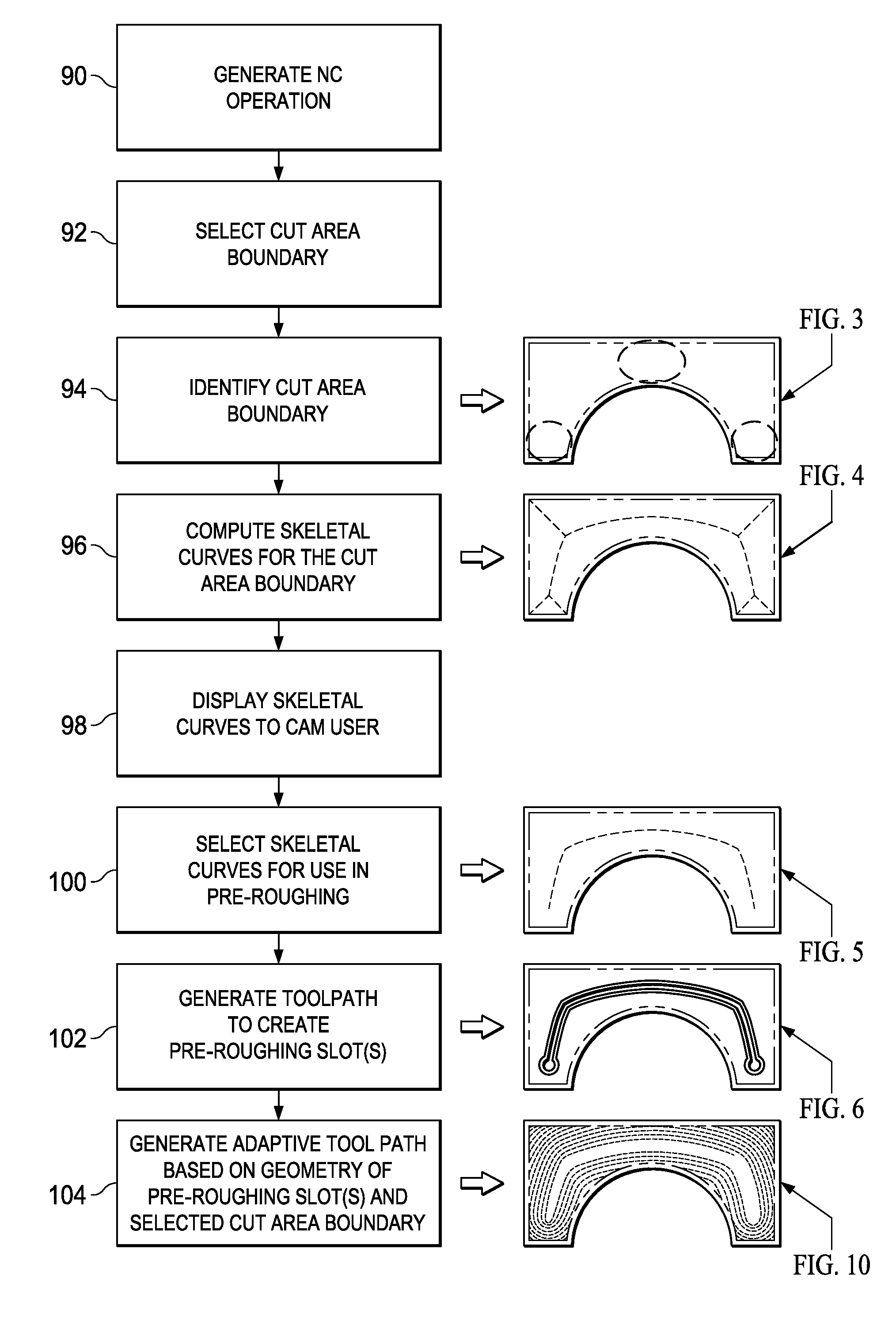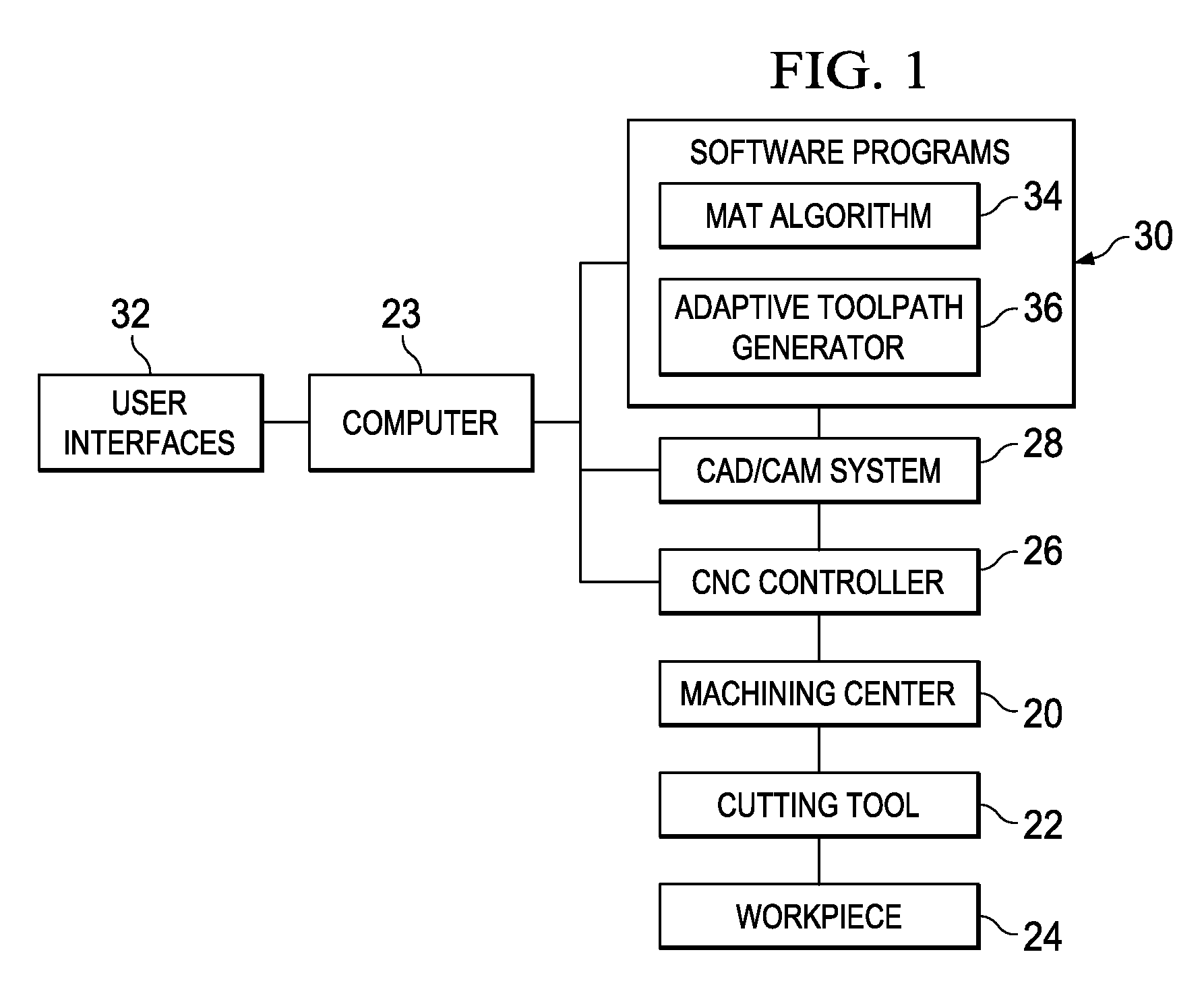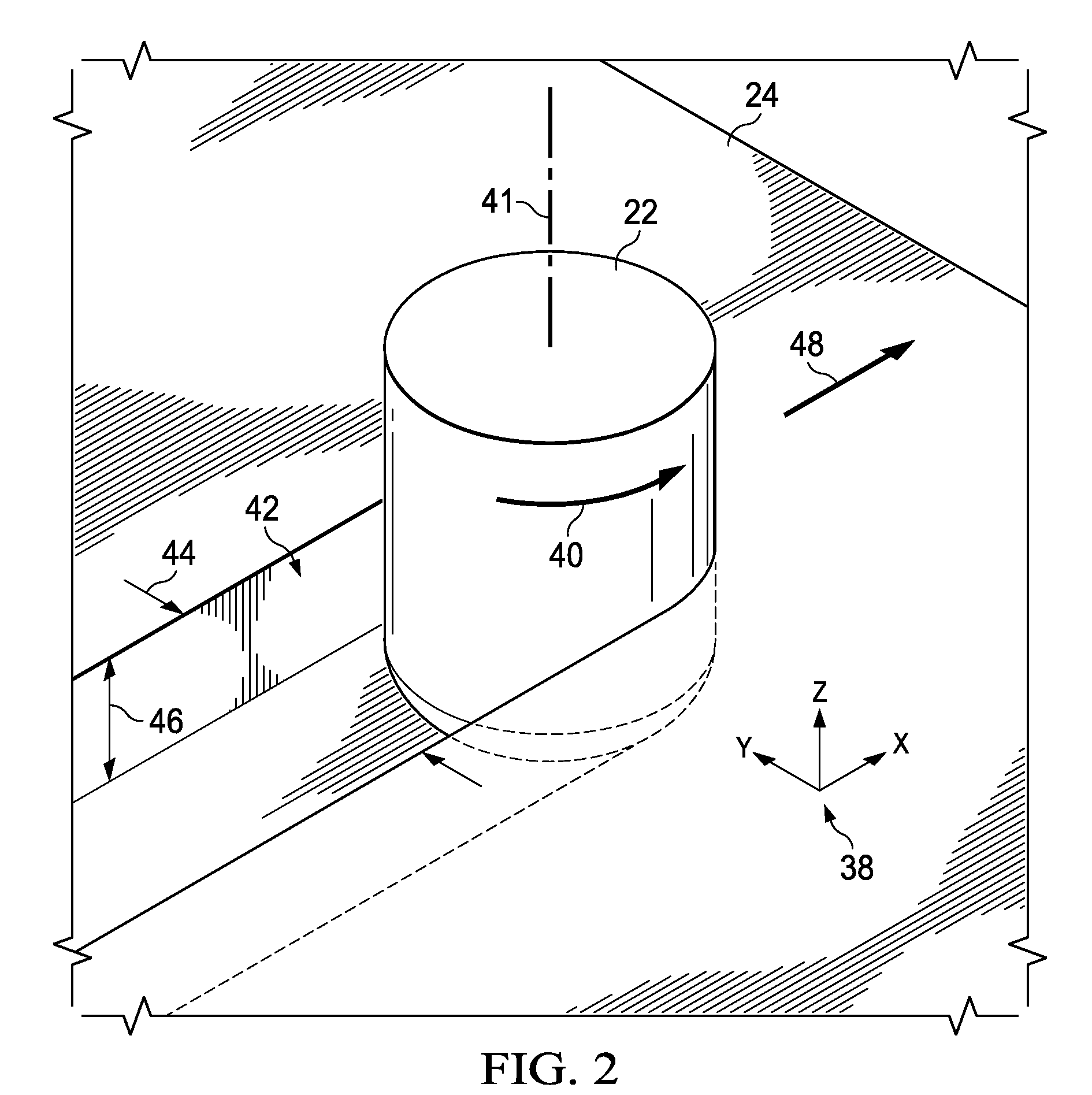Method of optimizing toolpaths using medial axis transformation
a toolpath and medial axis technology, applied in the direction of total factory control, programme control, electric programme control, etc., can solve the problems of low efficiency, inability to actually achieve constant feed rate, and inability to optimize machine utilization rate, so as to reduce machining time, increase material removal rate, and constant feed rate
- Summary
- Abstract
- Description
- Claims
- Application Information
AI Technical Summary
Benefits of technology
Problems solved by technology
Method used
Image
Examples
Embodiment Construction
[0025]Referring first to FIG. 1, a workpiece 24, which may comprise a solid material such as aluminum or titanium, may be machined using a cutting tool 22 driven by a machining center 20. The machining center 20 may comprise an automated multi-axis machine that displaces the cutting tool 22 and the workpiece 24 relative to each other. The machining center 20 may be automatically controlled using a programmed controller, such as the CNC (computer numerically controlled) controller 26. The machining center 20 may comprise, for example and without limitation, a 3-axis or 5-axis mill having a rotating spindle (not shown) for rotating the cutting tool 22. The cutting tool 22 may comprise, without limitation, an end-mill 22 shown in FIG. 2. The CNC controller 26 may be coupled with a CAD / CAM (computer aided design / computer aided manufacturing) system 28 having CAM software (not shown) and access to one or more software programs 30. In the illustrated embodiment, the software programs 30 i...
PUM
 Login to View More
Login to View More Abstract
Description
Claims
Application Information
 Login to View More
Login to View More - R&D
- Intellectual Property
- Life Sciences
- Materials
- Tech Scout
- Unparalleled Data Quality
- Higher Quality Content
- 60% Fewer Hallucinations
Browse by: Latest US Patents, China's latest patents, Technical Efficacy Thesaurus, Application Domain, Technology Topic, Popular Technical Reports.
© 2025 PatSnap. All rights reserved.Legal|Privacy policy|Modern Slavery Act Transparency Statement|Sitemap|About US| Contact US: help@patsnap.com



